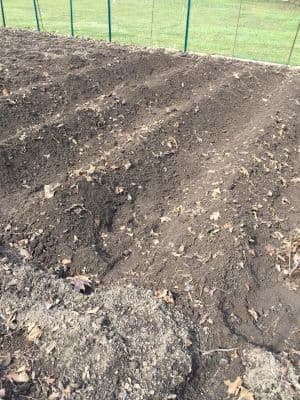Crop Rotation for Healthy Soil

Rich, Healthy Soil Begins with Crop Rotation
You want the very best for your plants, right!? Then, you need to practice crop rotation. In fact, this gardening technique should be utilized in even the smallest gardens. Why!? Simply because rotating crops helps to keep your soil rich and healthy.
Since ancient times, Man has farmed the land. First came the Hunter-Gatherers, who roamed the land picking wild berries and vegetables. Eventually, somewhere along the way, Man used his noggin and began planting seeds in small plots near his cave. A short while later, other brainstorms caused man to weed the field, and provide water during droughts. Every spring, man would exit his cave and start a new crop in his garden. Over the years, crop productivity slowly declined. Thousands of years later, man had yet one more brainstorm…. He figured out the value of crop rotation.
Just think, you get the benefit of thousands of years of learning just by reading this article!!!
The Benefits of Crop Rotation
Soil Depletion: Each crop uses different types of minerals in the soil. If the same crop is planted each year, over time the soil is depleted of minerals essential for plant growth and health. Rotating different crops helps return depleted minerals to the soil as the plant dies and decomposes. By now you are wondering if today’s fertilizers return these lost chemicals and minerals. The answer is yes, but it is not free, and not as effective, as a sound crop rotation program.
Insect Control: Insects over-winter in your soil. They enter the leaves and vines of your plants. As you till or plow your garden, some of those insects find a very cozy home for the winter inside decaying plant matter under the soil. Eventually, those grateful insects re-awaken in the spring, hungry to re-infest your new crop. Rotation helps to remove their food source.
Disease Prevention: Just like insects, plant-specific diseases can also over-winter in plant leaves and vines under your soil. You can help to guard against this by removing and destroying any diseased plants. Crop rotation is also effective in preventing and minimizing plant diseases.
How to Rotate Crops
Here comes the easy part. Rotate crops on a three to four-year cycle. For example, a corn crop planted this year is not planted in the same field for the next two or three years. Ideally, altogether different crops should be used each year as insects and disease that affects one crop, can affect similar crops.
Did you know? Purdue Agricultural Department recommends some plants, such as pumpkins, should not be planted in the same field for up to seven years!
Okay, so you have a home garden and only a small space. Rotating crops is just as important for your garden plants. In whatever space you have, rotate them in a three-year cycle. But also, be more diligent in discarding any insect-infested or diseased plants.
Related Articles
Please support our site. Shop for:
- rmmatthews100@hotmail.com
- 585-721-6528
- Rochester, NY
©1999-2024 GardenersNet.Com, All Rights Reserved

